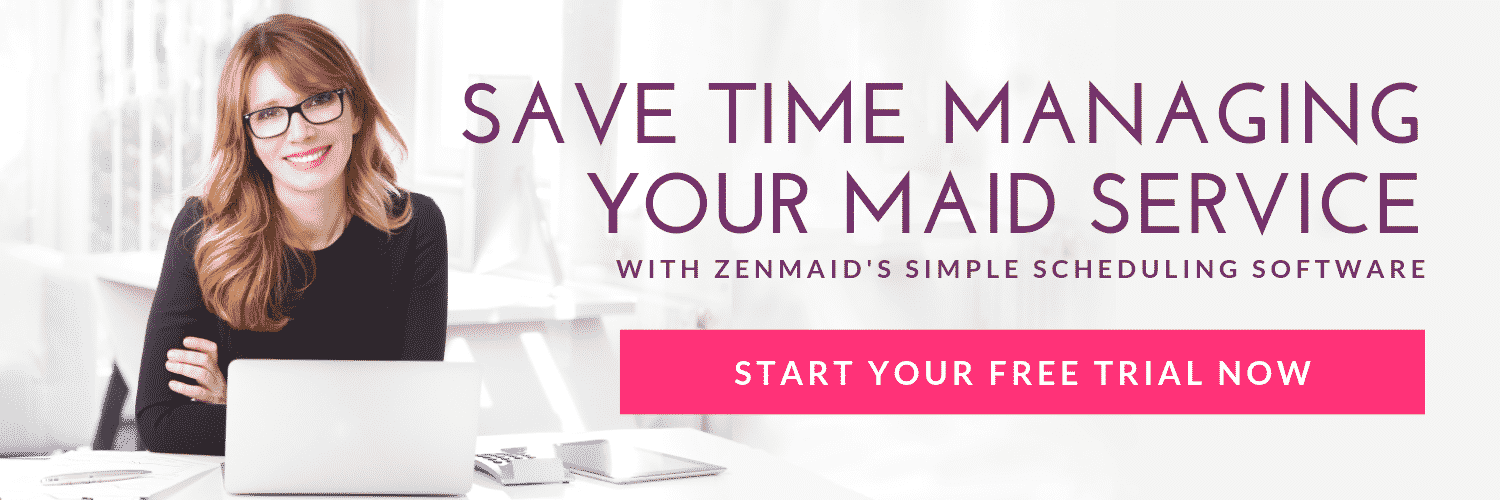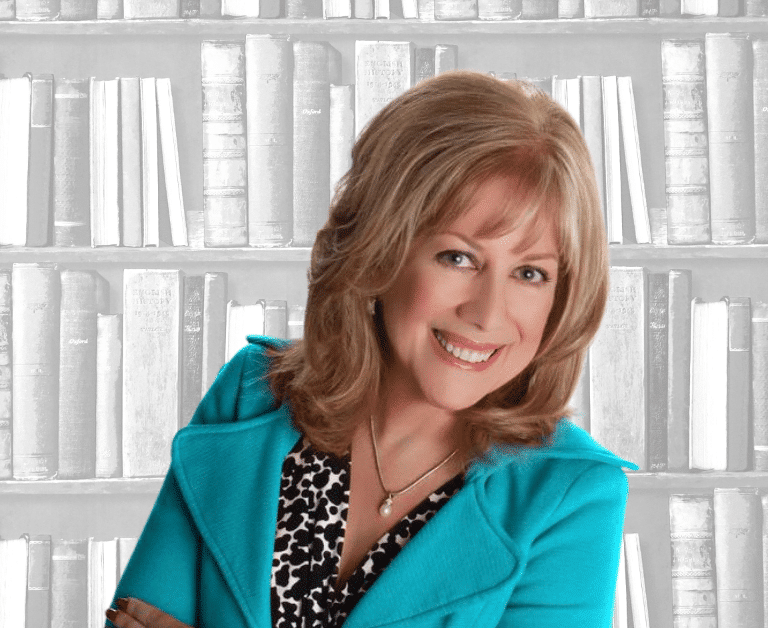Last Updated on August 24, 2023 by The ZenMaid Team
Every business owner has made their fair share of mistakes during the pursuit of entrepreneurship. But what separates growth from failure is how you react to these mistakes and learn from them. Everyday situations that might seem irrelevant or small at the time can turn out to be massive turning points for your business, depending on how you react to them.
In this post, we’ll share strategies and mindsets to focus on that will help you learn from your mistakes, prevent them from happening again in the future, and find innovative solutions to common mistakes that maid service owners make.
Shift your ‘mistake’ mindset
When something goes wrong in your business, you can either repeat that process so that it continues to go wrong, or you can find ways to make things right.
To make the most out of past mistakes, you need to look back at the milestones and situations that have shaped your business. The mistakes you make can reveal where there are gaps in your business and allow you to course-correct.
These opportunities can change your business entirely and put you on a path for growth. Your mistakes enable you to create more opportunities to do better within your business. They also help to shift your mindset and reframe certain potentially negative experiences.
Making mistakes and learning from them gives you the opportunity to change what you’re doing and develop new and innovative solutions to any problems you’re facing.
Try to anticipate likely mistakes
Cleaning itself comes with a ton of unknowns and factors you can’t always plan for. There are hundreds of things that could likely go wrong with any cleaning. A few examples include:
- Getting locked out of the property
- Dealing with broken fixtures and equipment
- Pets escaping the home
- Bringing the wrong equipment
- Losing a client’s keys
- Staff not showing up for work
All of these have happened to cleaners and maid service owners, and they’ve had to learn ways to anticipate them and plan for solutions ahead of time. Although you’ll never be able to fully anticipate everything that can go wrong, you can have contingency plants in place that account for some common cleaning mishaps.
You can learn a lot about what problems to look out for when you have a community of maid service and cleaning business owners that you can learn from (like our Facebook group, The ZenMaid Mastermind). Even without a network of other cleaning business owners, there are some things that you may be able to anticipate just by taking the time to make a list of what could go wrong during a cleaning.
Create policies and procedures for common problems
While there are a lot of aspects of your business that might fall beyond your control (like the ones we mentioned in the previous section) you can have policies in place that will lessen the likelihood of them happening.
You can create policies for your business that solve problems or make it so that you don’t have to face them every time you do a cleaning.
For example, some customers may have unruly pets that escape the second you open the front door.
Ever had to chase dogs down the road because they accidentally escaped during a cleaning? It might be worth adding a policy that the owner must put pets in a particular part of the home or a crate during cleanings. You can frame the policy in a way that shows your customers that you care about the wellbeing of their pets and want to protect their safety.
Document every mistake and how you fixed it
Anytime something goes wrong in your business, you can look at what went wrong and find ways to fix it at that moment. Even more importantly, you have an opportunity to prevent it from going wrong again in the future.
When you encounter a problem in your cleaning business and find a solution, it’s important to document the systems and processes you use to correct them. If something has gone wrong once, it’s likely that it will happen again. Having a documented process on how you handled that situation, what you’re doing to prevent it, and how to address it if it happens again can save you tons of time and headache in the future.
Present solutions that benefit you and the client
After an incident where Krissi had a shower door fall on her during a cleaning, she came up with the idea to partner with a handyman to give her clients the opportunity to fix things on their property in addition to a cleaning. During the first fifteen minutes of the cleaning, her team will walk through the home and identify anything wrong with the property and things that may cause a problem.
Then they give their client the number of a handyman with whom they’ve created a partnership. This creates a win-win situation both for her business and the client. The customer feels good that they are receiving excellent customer service, and the cleaner can avoid unwanted injury or issues from the cleaning by identifying potential problems ahead of time.
This one mistake became an opportunity to solve a problem that may have occurred again. It also creates a new way to earn money by setting up a partnership with another local business.
Overestimate how long things take
Picture this: you’ve booked your first cleaning, done a walkthrough, either in person or virtually. You get to the client’s house, and all of a sudden, it looks nothing like it did when you did the walkthrough. You start cleaning and two hours in, you are still in the kitchen.
You always want to do a good job to secure a good review, so you continue on with the session, which ends up lasting twice as long as you estimated. Sound familiar?
Early on in your cleaning business, it’s not uncommon to underestimate the time it takes to complete a job, especially for a first-time client. Once you have a fully booked schedule, underestimating your timing can hurt how your business flows. When booking cleanings, especially for new clients, always factor in additional time to create a better buffer for the appointment. This also helps ensure that you’re not rushing to get the job done so you can make the next cleaning on time.
Another way to make sure you’re factoring in time correctly is to let the client know that they shouldn’t clean or tidy up before you conduct your walkthrough, or they send you a virtual tour. You want to see exactly what state the house is in so that you can plan accordingly.
In the same vein, it’s a good idea to overestimate how long it will take to get to the client’s home before the appointment. Regardless of whether you have clear directions, there might be some unexpected issues along the way. Give your staff plenty of time to get to the destination without having to rush and build in a buffer time.
Embrace the mistakes you make with open arms
Owning a maid service business comes with its own unique set of challenges and obstacles to overcome. Many cleaning business owners get knocked down and are forced to get back up time and time again. It takes a certain level of courage and resilience to work through difficult times and build a successful cleaning business.
One of the most important things you can do as a cleaning business owner is to adopt a growth mindset and find opportunities within every challenge. Every mistake that you make comes with its own lesson. If you never do anything wrong within your business, your business will likely become stagnant.
Mistakes force you to think outside of the box and come up with creative solutions to your problems. Rather than dwelling on the mistakes you’ve made in the past, try to embrace your mistakes with open arms and view them as tools to help you grow.
About the presenter
Krissi Foskett is the founder and CEO of BD365, Domestic Cleaning Business Network, and The Domestic Cleaning Academy. She started her eco-friendly cleaning business in 2016 and, within just 18 months, grew the company to over 100 domestic clients and a dozen staff, providing a tailored solution for domestic customers. In this post, we’ll share Krissi’s formula for learning from your mistakes and using them as an opportunity for your business to grow.
This talk first aired at the 2020 Maid Service Success Summit.
The Maid Summit is an annual online event that brings together the most successful leaders in the cleaning industry, like Debbie Sardone, Angela Brown, Courtney Wisely, Amy Caris, Chris Schwab and more. Get free access to masterclasses and workshops that will help you to grow, scale and automate your cleaning business so you can get more leads and create more profit. Make sure you’re on our email list to find out how to get free tickets to the next event.
If you found this article useful, check these ones out:
- 7 Fatal Flaws That Will Kill Your Maid Service (And What To Do Instead)
- 6 Ways to Enhance Your Cleaning Customer’s Experience With AI
- How to Find an SEO Agency for Your Maid Service – 2024 Guide
- Q&A with Stephanie Pipkin: Boosting Your Maid Service Profits and Other Tips
- How to brand and grow your cleaning business














